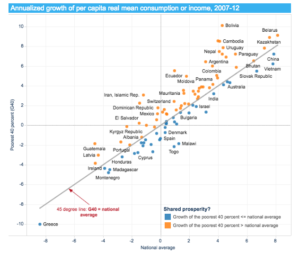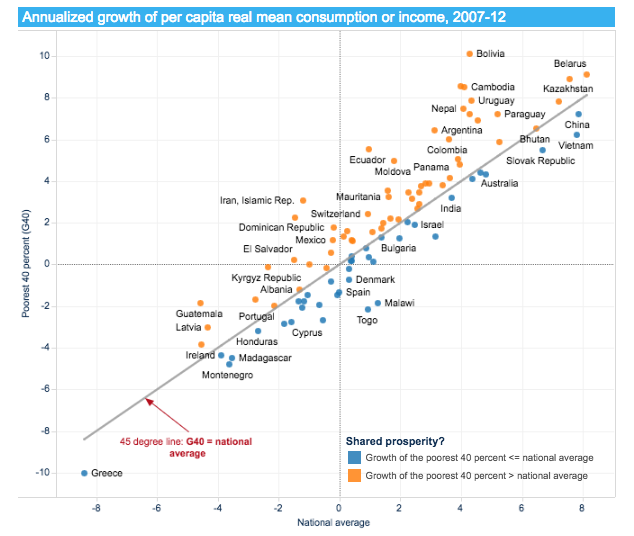Wrong ! Sustainable Development Goal target 10.1 aims to progressively achieve, by 2030, sustained income growth among the poorest 40 percent of th

Sustainable Development Goal target 10.1 aims to progressively achieve, by 2030, sustained income growth among the poorest 40 percent of the population at a rate higher than the national average in every country. This echoes the World Bank’s goal of promoting shared prosperity, although the World Bank does not set a specific target for each country but aims to foster income growth among the poorest 40 percent in every country.
In 56 of the 94 countries with data for 2007 to 2012, the per capita income of the poorest 40 percent is growing faster than the national average (countries above the diagonal line in the chart above). Of those 56, nine still experienced negative growth, including high-income countries such as the United Kingdom and the United States, and middle-income countries such as Guatemala and the Kyrgyz Republic. Thus, higher growth among the poorest 40 percent does not necessarily lead to prosperity.
Another group of countries experienced relatively strong growth (above 3 percent) over the same period for both the poorest 40 percent and the total population, but in some cases the growth rate for the bottom 40 percent was lower than the national average (for example China and Vietnam). In these cases the SDG target would not have been met, even though people were, on average, better off.
Among countries with data, a larger proportion of low- and middle-income countries met the target than high-income countries. Specifically, in around two-thirds of low- and middle-income countries the income of the poorest 40 percent grew faster than the national average, compared with half of high-income countries.
The monitoring of shared prosperity is a challenge because not all countries have household survey data in the specified period and, even if they exist, these surveys have to be reasonably comparable to each other in terms of the survey design and the construction of welfare. To expand the most recent database for monitoring shared prosperity, for example, as long as the survey dates are within +/- two years of 2007 and 2012, they are accepted, but currently only 94 countries have shared prosperity estimates for the period circa 2007 to 2012. More than half of the countries in the world do not currently have sufficient data to generate shared prosperity estimates.
fonte World Economic Forum

